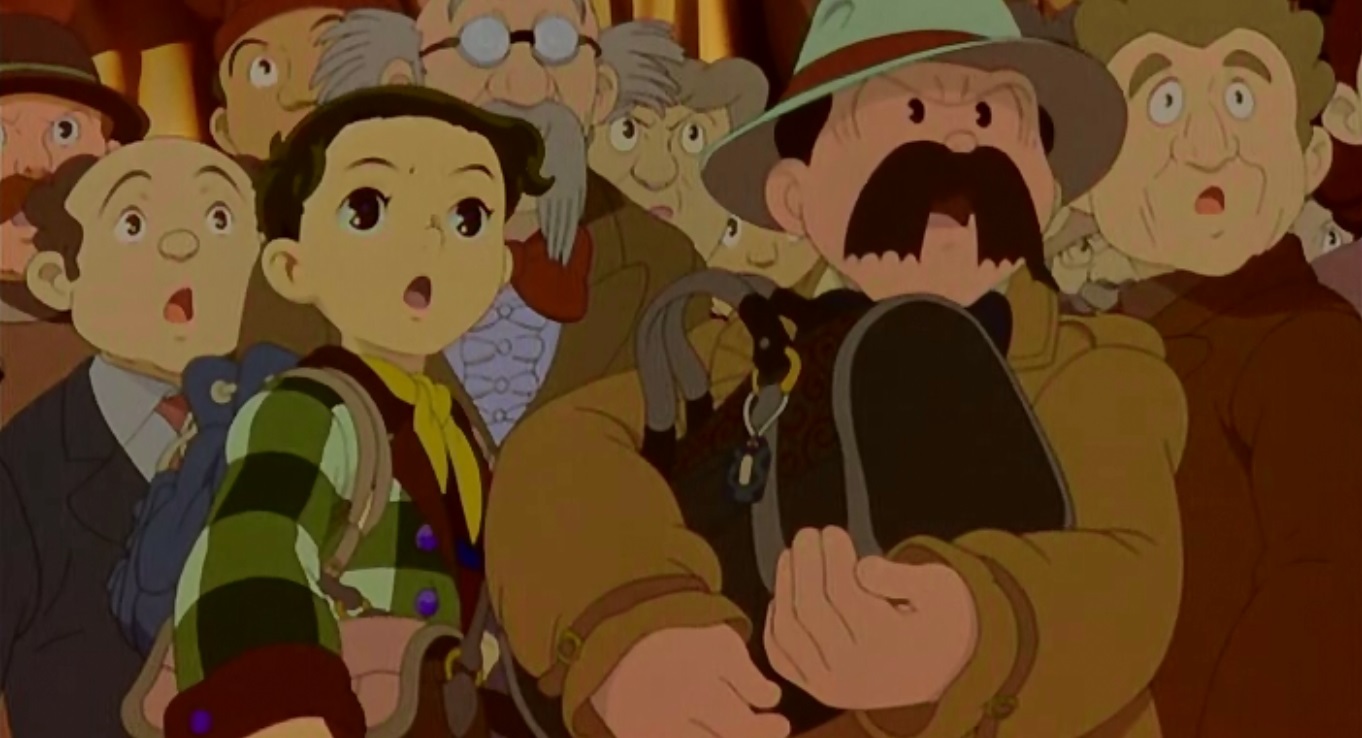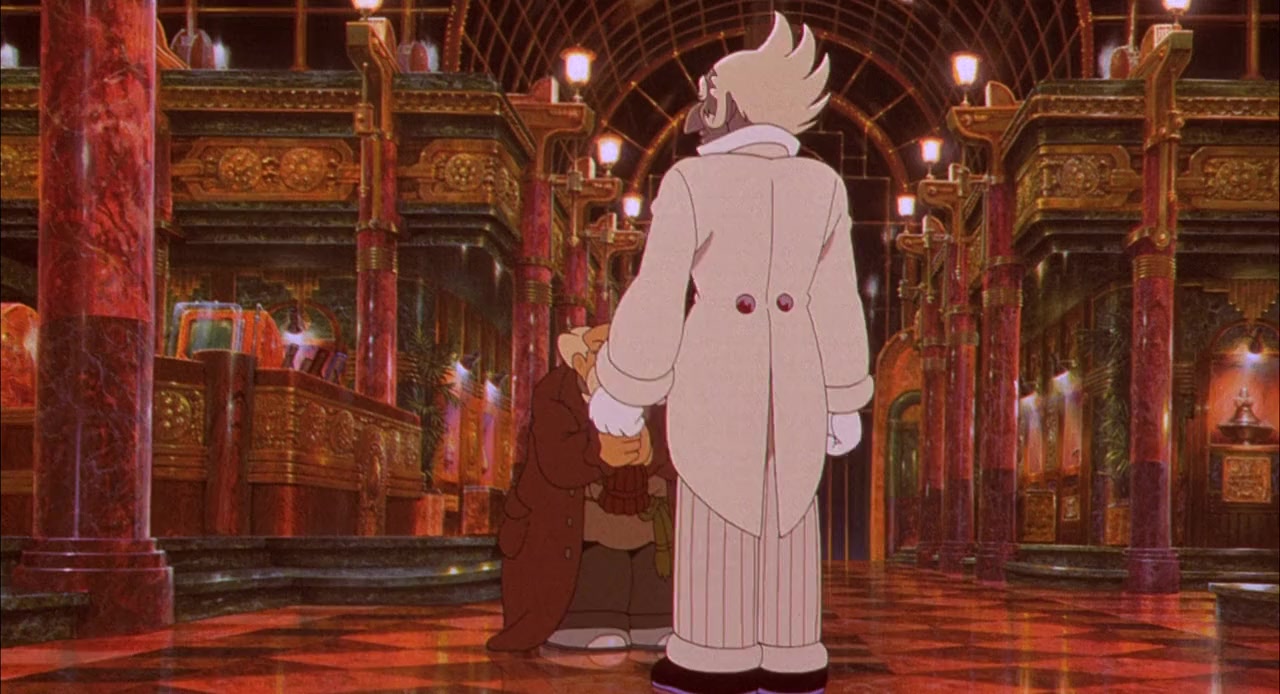In 2021-2022, tributes to Tezuka multiply in the form of anthology (Tezucomi,) or adaptations (Ayako, Dororo). An old practice since another work of the master of manga had already had the right to a re-adaptation: Metropolis. This manga is one of the first works of Ozamu Tezuka. The latter was barely 21 years old in 1949, when he discovered Fritz Lang's film Metropolis . Marked by images, he decided to write a story inspired by the plot of the feature film. This early work remained unpublished for a long time in France. Until 2001, when Rintarō, one of Tezuka's disciples, agreed to adapt it into an animated film. An ambitious project, 12 years after the death of Tezuka, hailed by critics to the point that in 2005 Taifu Comics decided to publish in France the original manga. 20 years after its release, the film has not lost its strength.
Metropolis: a steampunk investigation
In Métropolis is written the future of humanity. Robots, machines and modern transport are transforming the daily lives of residents. It is the metropolis of all possibilities where everything is bathed in jazz and lights. And the Ziggurat, the flagship project of Duke Red, the most powerful industrialist in the city, is there to remind the ambitions of the city. In a few days, this tower will dominate the city and will host a solar weapon unparalleled on earth. It is at the heart of the festivities that a Japanese inspector and his nephew Kenichi arrive. They are mandated to find and bring back Dr. Laughton, a scientist prosecuted for illegal experiments on humans. They will discover that behind the glitter hides a very hierarchical city where the richest live in the upper city; where humans and robots live in limited spaces. To maintain order, the police and a militia the marduk control citizens and repress offenders. And in the shallows, Dr. Laughton works secretly in the service of Duc Red to develop Tima, a latest-generation robot-human that will set the city ablaze. 
Metropolis: a fascinating atmosphere
The first impression left by the first minutes of the film is first of all its sound universe. The soundtrack is the work of Toshiyuki Honda. As a young man, he was immersed in a jazz and soul universe. His father, a jazz critic, introduced him to this music. Thus, he naturally becomes a jazz musician, collaborates with renowned jazzmen (Chick Corea) and jazz groups (Native son). Everything predestined him to be chosen to compose a soundtrack his tribute to the music of the 20s. This O.S.T is a love letter to African-American music and New Orleans-style jazz mixing frenzied brass bands, brass solos, banjo. Its orchestration culminates with the cover of Ray Charles' "ICan't Stop Loving You". The result is one of the most beautiful and original soundtracks in the history of anime The second impression is visual. Rintarō and his teams have indeed managed to pay tribute to the work of Tezuka and that of Fritz Lang. Once again, the first few minutes lay a high-flying technical foundation. Indeed, 3D and classical drawing blend harmoniously to make feel the verticality and opulence of the city. On the one hand, the draftsmen detail this neo-Gothic, industrial architecture. The steampunk universe is declined in a delirium of beams, suspended constructions, underground corridors. Trains, shops, offices, central squares, also present a wealth of elements, materials. Not to mention the robotic dimension. The teams depict a whole range of artificial beings from the most schematic to the most human. On the other side, they take up the Tezuka style: rounded faces, remarkable noses and a softness in the look. The whole is enhanced by a palette of warm, shimmering colors that overflows with each shot. The whole forms an artistic composition that marks the retina. 
A polysemic history
With Metropolis, three stories intersect and enrich each other. First of all, there is the investigation, the argument of the film. The scenario is so well written that the mysteries are patiently revealed during this dive into the bowels of the city. Who is Laughton? Who is Tima? Who are the Marduks? The threads of a web are woven and encompass our two heroes confronted with Cornelian choices. Mission, compassion, interest, survival? Which path to choose? Then, like many of Tezuka's works, there is a political and humanist dimension. As in Fritz Lang's film, the plot proposes a social reflection: city of the top against city of the proletarians. A class struggle is inevitable but the response provided by the work will surprise many. For Tezuka includes it in a larger reflection on the power and struggle of clans. Between these great interests, the working classes are like robots, an easily replaceable tool. Finally, there is the underlying philosophical/mythological discourse. This ziggurat is reminiscent of the Tower of Babel. And Duke Red's project evokes the ambition of men who want to equal the gods and who, like Icarus, defy the laws of nature. In this reflection, the character of Tima becomes the expression of this ambition and the embodiment of punishment. How will an entirely Cartesian artificial being react to the madness of Men? Especially since 4 months after the release of the film, will take place the attacks of September 11 and the collapse of the giant towers. Tragic chance that multiplies the strength of this anime. 
Metropolis: a faithful adaptation to the spirit of the work
To adapt is to betray and connoisseurs of the manga will note the liberties taken by the director. These are two orders. First, the anime incorporates more references to Fritz Lang's film either visually (the shape of the ziggurat) than narratively (the importance of the theme of class struggle). Then, the 2001 film changes elements of the original plot. The robot in the manga had the ability to fly and change what disappears in the movie. The latter adds a character, Rock, Duke Red's unloved son. All these deviations make sense from the purpose of the film. Indeed, it places great emphasis on the double face of humanity and the role of our feelings. Beneficial, they lead Tima to rise beyond her humanoid condition; negative they engender Rock's frustration, Duke Red's coldness. This then leads the work to take up one of Tezuka's favorite themes: what if robots also had a soul? Which offers us sequences of pure emotion: the sacrifice of the cleaning androids, the fate of the robot inspector or the rise of Tima.  With Metropolis, Rintarō signs a jewel of Japanese animation coupled with an exemplary adaptation. 20 years after its release, his film is still wonderful, poetic, intelligent. It reminds us how Tezuka is a genius creator.
With Metropolis, Rintarō signs a jewel of Japanese animation coupled with an exemplary adaptation. 20 years after its release, his film is still wonderful, poetic, intelligent. It reminds us how Tezuka is a genius creator.




















